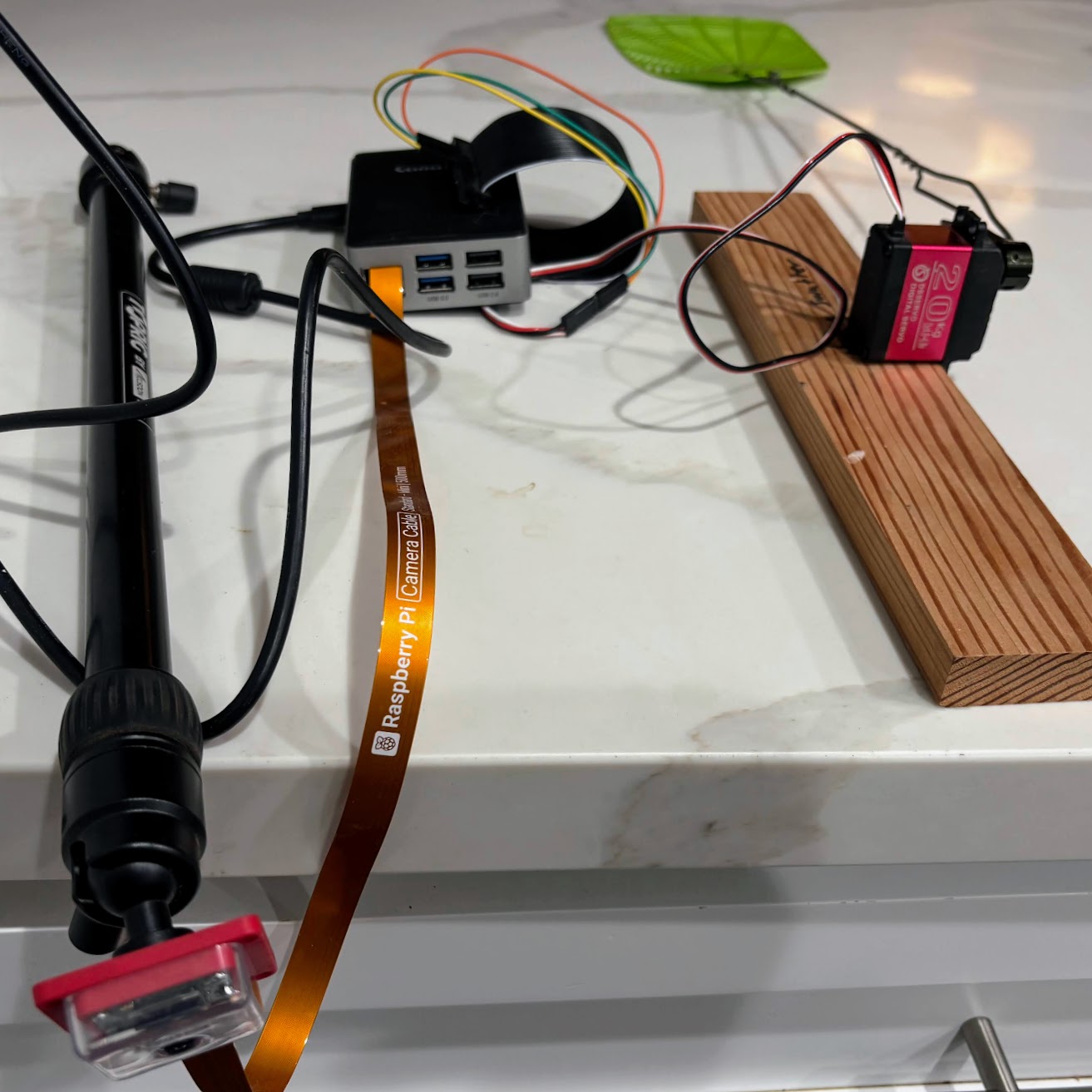My dog, Honey, has a long history of stealing food from our kitchen when we aren’t looking. She is particularly drawn to our skillet, often taking it upon herself to liberate the skillet of any meats or grease it may contain. This is both annoying and a safety concern if the skillet is hot.
We needed to consistently deter her from entering the kitchen so that she could learn to avoid the kitchen. This deterrent would need to do two things:
- figure out if Honey is in the kitchen with high recall (i.e., minimize false negatives)1
- actuate a deterrent that Honey dislikes
My solution comprises a Raspberry Pi, a Raspberry Pi AI Camera, a servo, and a fly swatter. The Pi runs a Python script that regularly checks whether the array of objects detected from the camera contains a dog. If a dog is identified, it saves the image and rotates the servo, which is connected to a fly swatter, 180 degrees. Honey doesn’t like fly swatters (since we swing them fast and they make loud sounds) so this actuation sends Honey skulking out of the kitchen.
This system has been remarkably effective. When we first deployed it last year, Honey triggered it several times in the first week, and quickly learned to avoid the kitchen. Our kitchen is now safe from Honey, and Honey is now safe from our skillet.

Footnotes
-
Consistency is key for canine learning. Precision is less important to us. We are ok if there are some false positives, though too many might get annoying. ↩